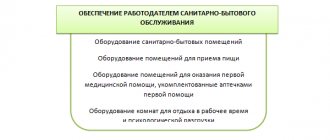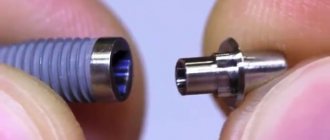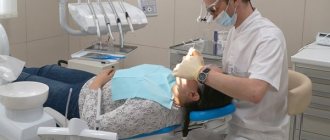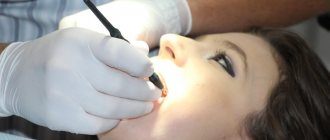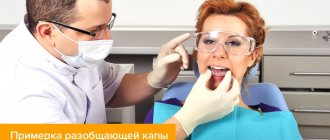Dentistry is a completely self-sufficient branch of medicine. Today dentistry is able to eliminate any problem of the dental system. Depending on the clinical situation, the patient is referred to the appropriate specialist:
- Dentist-therapist. Restoration of damaged teeth and enamel, treatment of caries, pulpitis, periodontitis, gum disease.
- Orthodontist. Bite correction.
- Orthopedist. Modern prosthetic techniques.
- Dentist-surgeon. Complex therapy requiring surgical intervention. Including implantation.
Aesthetic dentistry (restoration) is also popular, which helps to get rid of defects in teeth (chips, cracks), curvature of the dentition, damage to teeth (luxation, trauma), and pathologies of both jaws.
Brutal drills and anesthesia with side effects lasting a week are long gone. Modern methods of dental treatment are based on the use of computer technology, non-invasive therapy, professional equipment and innovative materials. This tandem allows you to carry out a complex procedure that previously took months, in just a couple of visits to the dentist. High quality and pain free.
Elimination of caries
Modern methods of caries treatment are based on non-invasive therapy, even in the most advanced cases. Often, a drill or traumatic surgical intervention is not required to remove a carious cavity.
The use of a laser is considered a revolutionary technique. The device copes well with removing damaged tooth tissue. And at the same time disinfects the treated area. For surgical operations, the laser is also indispensable, because makes neat, local cuts. This reduces the traumatic nature of the procedure and, as a consequence, the rehabilitation period.
For the treatment of caries in the initial stages, the ozone therapy procedure is effective. Ozone treatment helps get rid of any infection in the oral cavity and prevents the further spread of bacteria. Ozone is used for superficial and fissure caries. And also when the enamel darkens, when bacteria have not yet reached the dentin. The procedure is safe, painless, and is often used in pediatric dentistry.
Air blasting is also used to remove dead tooth tissue. A directed stream of fine particles helps clean the affected tooth cavity, without the use of a drill.
Use of ozone
Ozone is used mainly for caries. This is also a painless modern method that allows you to completely eliminate the use of a drill. The essence of the procedure is to completely disinfect the affected area of the tooth. After treating the tooth with ozone and destroying all pathogenic microorganisms, its surface is coated with an enamel-restoring composition. The entire disinfection procedure takes no more than half a minute. The advantages of this method:
- there is no need to use a drill to penetrate the affected area of the tooth;
- high speed of operation;
- complete disinfection;
- painless operation, which makes the use of ozone especially popular in pediatric dentistry.
The disadvantage is that its use is not always possible. There are deep dental lesions when it is impossible to get to the desired area without a drill.
Gum inflammation
Common gum diseases are gingivitis and periodontitis. In the first case, inflammation develops only in soft tissues and does not affect the dental unit. Characterized by swelling, redness and bleeding of the gums. If you do not seek dental care, gingivitis can become chronic. Or develop into periodontitis. This involves the root canals and hard tissues of the tooth. The adjacent gum peels off, and a purulent process begins in the resulting cavity. Without timely treatment of teeth, this leads to their loosening and loss.
The choice of therapeutic methods is based on the condition of the oral cavity and the severity of the pathology. As a rule, the following are used for the prevention and treatment of gum inflammation:
- Rinse procedures. After the examination, the doctor prescribes the optimal type of solution (alcohol-based antiseptics or with the addition of chlorhexidine).
- Ointments and gels (healing, anti-inflammatory, antifungal).
- Therapeutic toothpastes (anticaries, antiseptic).
- Medicines.
In most cases, soft tissue inflammation is caused by a poorly installed (polished) filling or crown. Therefore, when a disease appears, it is important not to delay visiting a doctor.
Physiotherapy (electrophoresis, darsonval, massage) is used as additional methods for treating soft tissue diseases in the oral cavity.
What problems are we solving?
The most common diseases with which adult patients come to JSC “Medicine” (academician Roitberg’s clinic) for the treatment of diseased teeth include:
- caries is tooth decay caused by the activity of pathogenic bacteria. During therapy, the dentist cleans the lesions on the enamel and also fills the resulting cavity with a filling;
- pulpitis is one of the complications of caries. In this case, bacteria penetrate into the deep layers of dentin, resulting in inflammation of the pulp. To treat teeth, the doctor removes loose, fibrous areas, cleans and fills the canals;
- cyst is a formation filled with pus or foreign fluid, the treatment of which requires high competence of a doctor due to its complexity and labor intensity. Treatment for cysts usually involves surgery;
- periodontitis is an inflammatory process at the apex of the tooth. After diagnosis, the doctor makes a decision on the course of treatment. Most often, the dentist opens the canals and removes the purulent inflammation. In difficult cases, treatment is not performed and teeth are removed.
Of course, this is far from a complete list of problems that patients come to JSC “Medicine” (academician Roitberg’s clinic). As a rule, they are provoked by unfavorable environmental conditions, heredity, non-compliance with oral hygiene rules, and lack of the habit of brushing your teeth regularly. Regardless of what disease you are faced with, our staff is ready to provide you with qualified assistance.
Inflammation of the dental nerve and hard tissues of the tooth
The dental nerve (pulp) is located in the internal cavity of the tooth and contributes to the development and strengthening of the hard tissues of the tooth. Any impact, mechanical or due to infection, can cause inflammation of the nerve. In the acute stage, pulpitis is accompanied by severe pain in the tooth, especially at night. Chronic pathology does not have pronounced symptoms, pain syndrome appears periodically.
Therapy depends on the degree of damage to the pulp tissue. If the inflammation is minor, the dentist fixes the drug in the tooth. Until the disease is completely eliminated. The tooth is then filled. If the dental nerve is completely affected, the pulp is first removed under anesthesia. The dental treatment procedure includes cleaning and filling the canals. Then restoration of the upper, crown part of the tooth.
An advanced form of pulpitis provokes the development of periodontitis – inflammation of the upper part of the tooth root. The main symptoms are sharp pain when pressing on the tooth, swelling of the adjacent gums. It also occurs in acute and chronic stages. Therapy includes the procedure of depulpation and subsequent filling of the canals. If a cyst is present, in some cases an incision is made in the gum and the affected apex of the tooth root is resected.
How caries is treated in PROFI-Dent dentistry
All manipulations are carried out by experienced, competent specialists. The dentist selects the method of caries treatment according to the stage of the disease:
- Carious lesions at the stain stage are treated with remineralization therapy aimed at restoring the strength of tooth enamel.
- At the middle and deep stages, it is impossible to do without preparing dental tissues and filling canals.
After the procedure and the cessation of anesthesia, the filling should not be felt - if it interferes with the teeth closing, you need to see a doctor to have it corrected. At first, the patient may complain of tooth sensitivity or pain, which goes away within a couple of weeks and is considered normal.
If the pain intensifies and becomes paroxysmal, you need to consult a doctor to undergo an examination and identify the source of inflammation.
The price for caries treatment in Moscow depends solely on the stage of the disease, the complexity of the case, the volume of intervention, the technologies and materials used. Therefore, treating caries cheaply is quite possible even in a premium clinic, as you can see by contacting PROFI-Dent.
Enamel destruction
Pathology is usually caused by a carious process. Bacteria in the oral cavity disrupt the acid-base balance, which changes the composition of the enamel. The cause of demineralization can be an incorrect diet when there is a deficiency of calcium, phosphorus and fluorine in the body. And also due to chronic diseases associated with inability to absorb calcium and metabolic disorders.
The destruction of the tooth surface can be stopped by a remineralization procedure. But only if the hard tissues of the tooth are not damaged. That is, caries is at the initial stage.
The dental treatment procedure includes:
- Professional cleaning, removing soft and hard plaque.
- Treatment of the surface of teeth with special compounds containing calcium (8-10%).
- Installation of a temporary mouth guard with therapeutic gel (sodium fluoride, calcium hydroxide).
The course of enamel restoration includes 7-10 sessions, depending on the condition of the teeth. The procedure takes no more than half an hour, is absolutely safe and painless.
What is dental treatment?
Most often, dental treatment involves treating caries. Then the caries is removed and restored with filling material. But at the same time, the filling must ideally restore the color and, more importantly, the shape of the tooth. So that nothing gets between the filling and the adjacent tooth, there is no injury to the gums. symptoms
: There may be a reaction to cold, which goes away on its own within 3 to 10 minutes.
The edges of the filling should blend perfectly into the tooth enamel. Not only because of aesthetics, but also to preserve the filling for many years - so that plaque does not accumulate in this area and secondary caries does not appear.
manifestations
: none or like caries. Often darkening of the edge of the filling.
In case of inflammation of the nerve - pulpitis, dental treatment consists not only of restoring the tooth, but also of removing the nerve. And reliable canal filling.
symptoms
: usually unforgettable. Intensifying in the evening and reaching its climax at night.
When the bone around the root is inflamed (periodontitis), dental treatment will require exposure to it. Principles and before and after x-rays are here.
symptoms
: there is their complete absence; pain when biting, tapping; or swelling.
If treatment is not carried out for a long time—within a year or two—more inflammation will appear. Called a granuloma or cyst. Depending on the size. In case of severe inflammation, 90% of teeth can be saved from removal. This will take extra time, but the results are worth it.
symptoms
: usually does not manifest itself in any way, develops slowly, and exacerbations may occur every few months. From mild to significant.
In case of severe decay, the tooth can be strengthened with a pin. Metal, titanium or fiberglass. Can be restored with a cast tab.
When the teeth are mobile, they are splinted.
A wedge-shaped defect is treated almost like caries. symptoms
: occurs only on the outer surface of the teeth near the gums. More often the reaction is to cold and sour things.
After 35 years, tooth wear often occurs.
Periodontitis and periodontal disease cause major problems. Often leading to the removal of completely healthy teeth.
Aesthetic treatment options
Veneers can greatly change the shape and color of teeth.
They come in composite and ceramic. With or without dental treatment. Teeth whitening is not a treatment. But it does affect aesthetics.
Correction of individual teeth and bite positions
Various anomalies in the position of the teeth slowly and gradually worsen the condition of the teeth and gums around them.
Braces and transparent aligners.
On this page there is a selection of all common violations:
- Protruding front teeth. Examples of corrections without braces.
- Rotation of a tooth or teeth. Treatment options.
- Inclinations of teeth: inward, outward, and between each other. With before and after photos.
- Correction of crowded teeth.
The space between the front teeth is called a diastema. About the causes and methods of treatment with photos - here.
Restoring missing teeth
This requires not dental treatment, but prosthetics:
Without crowns.
Crowns, dentures
bridges
and implants.
Sometimes dental treatment consists of simply polishing the old filling - then it can still serve for a long time. Or reducing tooth sensitivity with a special preparation, without any treatment of the tooth.
Prevention
Many dental problems can be avoided by periodically removing plaque and especially tartar.
Tooth sensitivity
A painful reaction to temperature changes, or due to chemical exposure is called hyperesthesia. The cause is increased abrasion of the enamel and the presence of pathological inflammation of the soft tissues in the oral cavity.
In this case, dental treatment is based on eliminating the root cause of the disease: treating inflammation, removing low-quality or broken fillings, closing the roots of the tooth due to receding gums.
The procedure consists of daily remineralization, as well as the use of physiotherapy. Typically, it takes about two weeks for tooth enamel to restore. The patient then continues therapy at home.
Root canals
In dentistry, restoring the inside of a tooth is called endodontic treatment. It is required to preserve the dental unit during the treatment of deep stages of caries, as well as in the prosthetic procedure.
The therapy consists of preliminary extraction of the pulp, thorough cleaning and disinfection of the canals, followed by filling them. This is necessary to protect the resulting healthy tooth cavities from the penetration of bacteria. After filling the canals, the dentist restores the upper, crown part of the tooth.
If the inflammatory process has spread to the root of the tooth, then a drug is fixed before filling.
Innovative painkillers
Dental restoration using general anesthesia is a thing of the past. Modern anesthesia is applied locally and does not cause side effects.
The most popular option is sedation. An anesthetic in which the patient is conscious but does not feel pain during surgery. New types of anesthesia also act as a sedative to reduce patient anxiety during the procedure.
Modern types of painkillers are effective for no more than 1.5-2 hours. After which the patient returns to his normal life, without problems with health.





